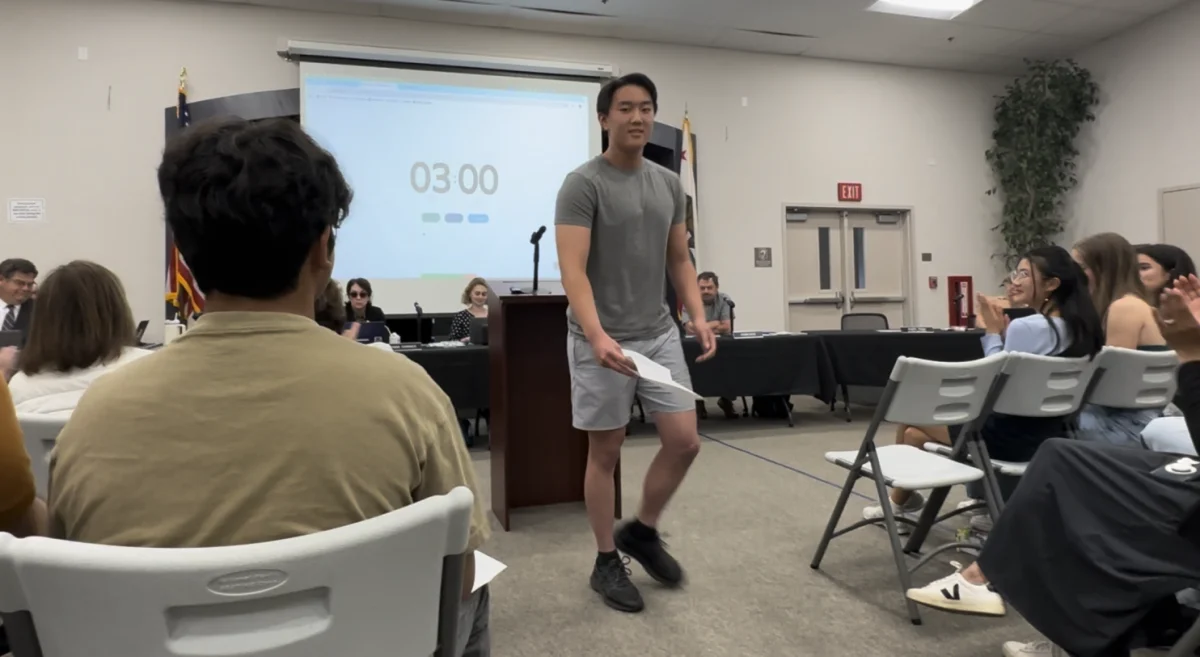The first Macintosh computer was introduced in 1984—nearly three decades ago and long before any current Los Altos High School student was born. Computers and the internet have existed for our entire lives and enough technological advances have been made that it is impossible to keep track of them all. Because the online world is such a fundamental part of students’ lives, it should not play such a small role in our education and there should not be such a lack of knowledge about basic technologies.
The school district should ensure that modern technology is implemented into Los Altos High School curriculums in any way for which budget constraints allow.
The school has been inching toward this—restrictions on the use of electronic devices on campus were recently loosened, extending students’ freedom to use these devices for educational and personal purposes.
“The students…have grown up with the Internet,” history teacher Michael Messner said. “Although we did have some policies in the past about cell phones and computer use in classes, we’re changing those so that technologies like those can be used for almost instant learning and information capturing.”
By allowing students to use electronic devices such as laptops, tablets and smartphones on campus, the school has increased the potential for integration of technologies into classes, ultimately creating a more beneficial learning environment for students.
“Students say they like to type; it’s more efficient, it’s faster, they love not having to carry a notebook to class,” history teacher Stephanie Downey said. “They can walk into class with nothing on them except for a brain.”
According to junior Maddie Klein, other benefits are that students “don’t have to worry about forgetting what the homework is or having to print out the homework. There’s fewer papers to worry about losing and it’s neater because you don’t have to write.”
Because of these advantages, many teachers on campus are now using online sites in their classrooms, receiving highly positive feedback from students. Downey has her complete class curriculum on Google Drive, a site that allows users to share and edit documents, presentations, spreadsheets and more. This allows the teacher to share in-class and homework documents with her students.
“I think two-thirds to one-third [of my students] preferred using this method to a paper notebook method,” Downey said. “If I’m using that utilitarian ethic of using the greatest good for the greatest number, then I should use this method.”
Not only do students prefer the use of online tools such as Google Drive, but their in-class performance and engagement suffers when they are not using technology-based resources.
“I have students where it’s like, oh, you forgot to bring your iPad that you’re using for this class or it’s dead, and they switch to paper and there’s a much lower level of engagement in the class that day,” Downey said.
While sites like Google Drive prove to be extremely valuable for educational purposes, the world of online tools spans much further than just sharing documents with one another.
“There’s this whole new app world that we can tap into by using this digital technology and we can do a lot more project-based learning,” Downey said. “It’s better preparation for 21st century workplace skills.”
This brings up the main goal of the Mountain View-Los Altos School District, whose mission statement says that “We are committed to creating a community of learners with the knowledge, skill and values necessary to combine personal success with meaningful contributions to our multicultural and global society.”
The stated goal is to prepare each student for the requirements needed to pursue a career in today’s society, yet without the implementation of modern technology in every classroom, students are left without the experience of using basic online tools that are necessary to achieve the “personal success” that the district envisions for their graduates.
Downey finds that “there is a lack of computer-user information knowledge” in students that she works with, which is a skill clearly needed to succeed in the modern job market.
“I don’t think that [the MVLA School District] should be graduating students without basic computer literacy,” Downey says.
The existence of what Downey calls “computer illiteracy” at the school should not be tolerated, as it creates a disadvantage for students who do not participate in the classes that do implement online tools into their curriculum. This problem is not brought to light until technology has been incorporated into a course; only then do teachers begin to notice that there are students in their classes who lack basic computer skills.
“I see a really wide gap in students who are really comfortable with all the different ways to use something, and others who just really struggle even setting up some really basic features,” English teacher Joanne Miyahara said.
This is a problem and the solution is clear: the school should increase its emphasis on the use of online tools in each classroom.
“Whether there’s additional workshops outside of school, inside the class, or maybe teachers weaving in mini lessons, I think that’s an important step,” Miyahara said.
A change like this would not come without difficulties, yet it is imperative to the success of the students graduating from the school. According to Messner, a technological shift like this would pose possible challenges including providing staff with “rigorous, thorough training.” Downey points out that a difficulty would be providing each student with the devices needed to participate, prompting her ideas of “digital textbooks” and issuing chromebook laptops to incoming freshmen.
While there are teachers at the school currently using online tools as part of their classes, the implementation should be expanded to teachers of both humanities and STEM subjects.
“It’s great that a science teacher, for example, can use an app in a classroom to teach science, but what about a social studies teacher like me?” said Messner. “I want to have a lot of examples and tools in my belt that I can put to work in the classroom almost from day one.”
The need for an on-campus increase in online tools is apparent, and the MVLA School District should take action towards this necessary upgrade. It is the district’s job to focus on creating the best educational environment possible for all teachers and students, and a school-wide shift towards the implementation of online tools into curriculums would have a very beneficial effect on students’ in-class mindset as well as having positive long-term impacts as graduates head off to further education and the work force. Most importantly, the use of technology in classrooms gives students the personal feeling that they are getting the most out of their education at Los Altos High School.
School Should Emphasize In-class Technology Use
November 5, 2013
Story continues below advertisement
0








